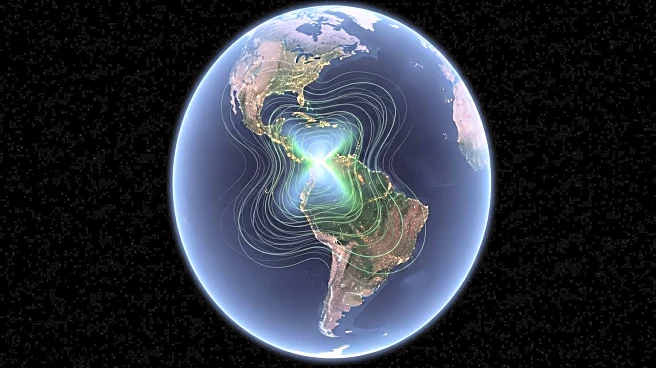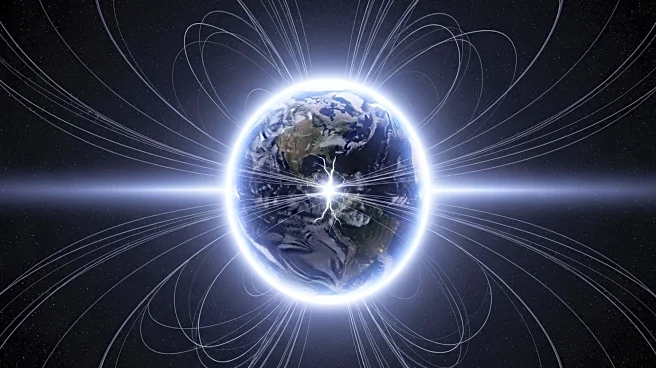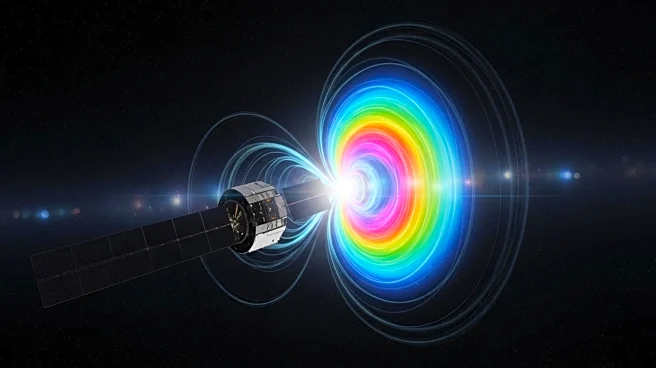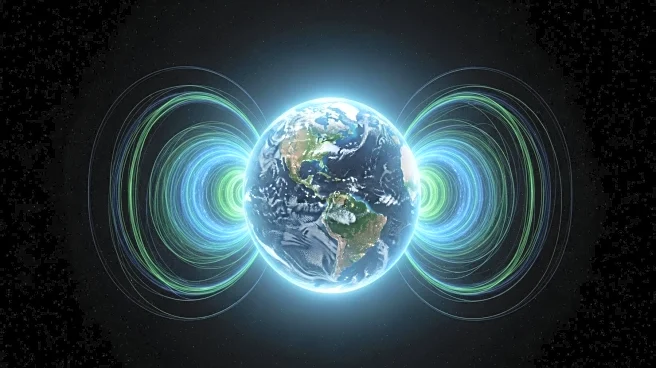What's Happening?
A weak spot in Earth's magnetic field, known as the South Atlantic Anomaly, has been expanding since 2014, according to satellite data. This anomaly, linked to fluctuations near Earth's outer core, poses risks to satellites passing over the region due to increased exposure to solar particles and radiation. The anomaly has grown by an area nearly half the size of continental Europe, with a lobe extending towards Africa where the field is weakening fastest. Researchers attribute this growth to reverse flux patches beneath the anomaly, where magnetism loops back into the core instead of radiating outward.
Why It's Important?
The expansion of the South Atlantic Anomaly is significant as it threatens the functionality of satellites and spacecraft, potentially leading to hardware malfunctions and communication blackouts. Understanding these changes is crucial for satellite operators and space agencies to mitigate risks and adapt technologies to withstand increased radiation exposure. The anomaly's growth also provides insights into the dynamics of Earth's magnetic field, which is vital for navigation systems and understanding planetary processes.
What's Next?
Continued monitoring of the South Atlantic Anomaly is necessary to track its development and assess its impact on satellite operations. Researchers will use data from ongoing missions like ESA's Swarm to study changes in magnetic field dynamics and predict future shifts. This research may lead to improved models for forecasting magnetic field behavior and developing strategies to protect space assets.
Beyond the Headlines
The anomaly's expansion raises questions about the long-term stability of Earth's magnetic field and its implications for global navigation systems. As the field continues to evolve, scientists must consider potential impacts on technology and infrastructure reliant on magnetic field data. This situation underscores the importance of international collaboration in monitoring and responding to geophysical changes.












